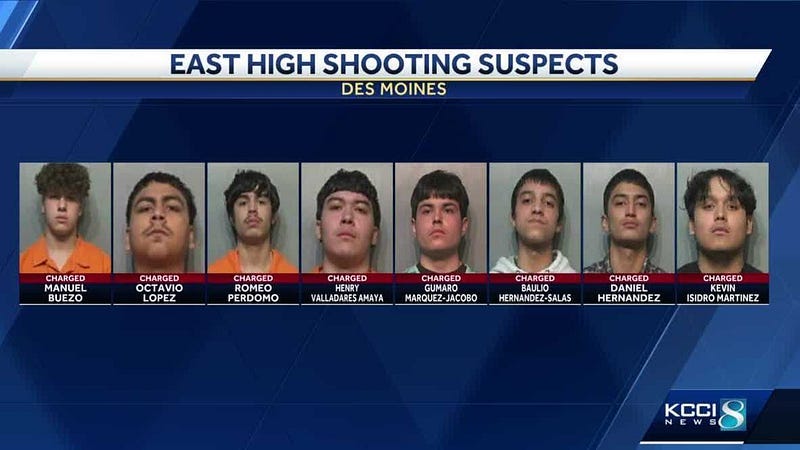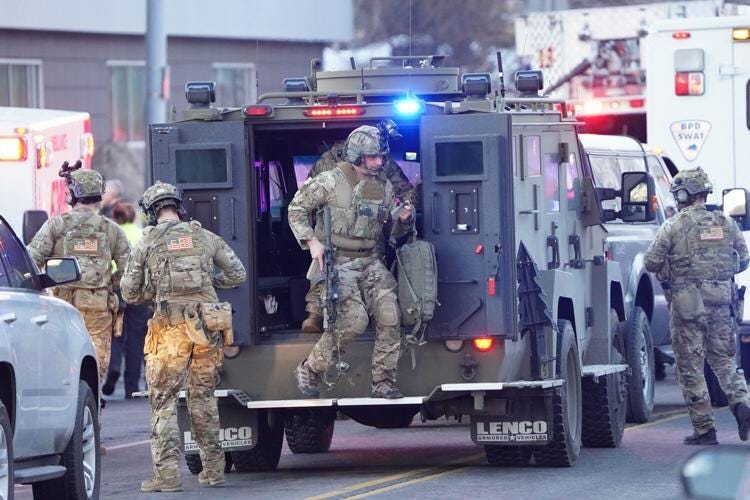The Other School Shootings: Gun Violence at America’s Poorest Schools
Today, two students were killed and a staff member was seriously wounded at the Starts Right Here charter high school in Des Moines, IA…
Today, two students were killed and a staff member was seriously wounded at the Starts Right Here charter high school in Des Moines, IA. Starts Right Here is an educational mentorship program that helps at-risk youth and has won high-profile support from state and city leaders.
Ten months ago, three students were shot, one fatally, at East High in Des Moines less than 3 miles away from the shooting today.
[I wrote this article the day after the East High shooting in Des Moines. Below is republished from the Kansas City Star on March 11, 2022]
A teen is dead and two bystander girls remain in critical condition after six teenagers fired dozens of shots at them outside of East High in Des Moines, Iowa at dismissal Monday. Police search warrants found six handguns and these teens, between 14 and 17, are all charged with murder. A similar scene has played out on a K-12 campus every week of this school year.
In November 2021 a mass shooting at a suburban high school in Oxford, Michigan, was followed by candlelight vigils and flags flown at half mast. Media was wall-to-wall searching for motive, and local TV did a spot on the victims being reunited with their horses. President Biden’s “heart went out to the families”.
We know exactly what to do when a school shooting looks like a school shooting should — Columbine, Sandy Hook, Parkland, Oxford. In preparation for the next one, children are running through active shooter drills and run, hide, fight scenarios as we speak.
Yet, following Oxford, there were 22 other shootings on K-12 school property in December. There have been almost 50 so far in 2022, more than most full school years between 1970 and 2017. None were breaking news on national networks. There was no national mourning or obligatory thoughts and prayers from our elected officials. America has a collective indifference to these “other” school shootings, but they too have a profound impact on students and staff.
On February 9, at McKinley High in Buffalo, NY, a student was severely stabbed and a security guard was shot by a student during a fight at dismissal. The school remained closed for 30 days as teachers and administrators struggled to develop a security plan. The teacher’s union still believes the school is not safe for staff.
Last Friday at Olathe East High in Olathe, KS, school officials got a tip about a student with a gun. When they brought him into the office, he shot the school resource officer and assistant principal. Also on Friday, a man was killed in the crosswalk in front of Hamilton Elementary in Moline, IL while students were arriving. A mother and her child going into the school “said a little prayer for him” as they walked past the dead body.
There is a commonality between McKinley, East High, Olathe East, and Hamilton Elementary. First, they are among the lowest performing schools in the country with well below average test scores and graduation rates. They are under-resourced. Second, their students are disproportionately Black and poor. 82% of the students at Olathe East are considered economically disadvantaged. Only 1% of students at McKinley pass an advanced placement exam.
Just hours after the 2021 Oxford shooting, three spectators were shot at a basketball game inside Humboldt High School in Tennessee. As students and fans crowded the concession stands, a 21-year-old died at the feet of the school’s cheerleaders and an 18-year-old was flown to Memphis with critical injuries. 78% of the students at Humboldt are Black, compared to 14% of the US population. The school ranks in the bottom 20% for test scores and graduation rates. This was one of 35 shootings at high school football and basketball games this school year, mostly predominantly minority schools.
There’s no question that mass killings in suburban schools are “uncommon”, “death is different”, and big body counts attract our attention. But our collective silence or indifference to the daily drum beat of shootings in and around schools is what allows them to continue. No other comparable nation just shrugs its shoulders when a gun is fired at kids on campus.
There is a troubling pattern of needless deaths of minority students at grossly underperforming schools, and the lack of attention paid to them by society. School shootings are not a white, suburban issue. They occur with far greater frequency at low-income schools that can barely graduate students, much less afford emotional support dogs, 1-on-1 counseling sessions, and biometric door locks.
The shots fired at our most vulnerable students are all preventable. We have promising and proven strategies for diffusing violence, safe passage programs, PREPaRE training, but they don’t address the systemic issues, including how easy it is for a child to get a gun in this country. Until we acknowledge that the life of every student in America is precious, and every school shooting deserves both attention and real action, the senseless violence will continue.
David Riedman is the creator of the K-12 School Shooting Database and a national expert on school shootings. Listen to my recent interviews on Freakonomics Radio, New England Journal of Medicine, and Iowa Public Radio the day after the Perry High shooting.






